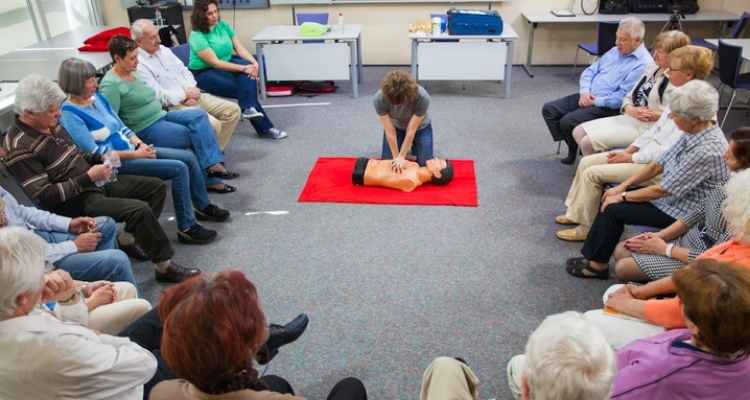It is a common misconception that there is only one basic level of CPR training when multiple levels can be taught. First aid training doesn’t consist of one encompassing class as there are many different classes and topics that you can sign up for. There can be a lot of confusion surrounding what certifications are available to attain and what classes will meet your needs in a professional or personal sense. It’s essential to be able to differentiate between the different types of CPR and first aid training, so you can attend the course that you may need to meet an employment, academic, or business requirement.
Be able to decipher the explicit and subtle differences between CPR and CPR C and other courses that may seem similar but consist of more intensive material as the levels advance.
CPR A
There are four levels of CPR levels A, B, C and HCP. They all provide crucial information and techniques, with CPR A teaching first aid participants everything you initially need to know about CPR. Level A will provide you with the skills and knowledge to utilize a proper CPR technique on adults only. CPR A covers the baseline skills on accurate positioning when performing CPR on an adult and how to use an automated external defibrillator (AED). This course will ensure that you know how to react and immediately respond to a conscious adult who has their airway obstructed by an object and more complicated techniques involving pregnant women. Although this material may not seem thoroughly extensive, the methods you practice can prove helpful in many emergency situations.
CPR A is often required to meet safety standards at a workplace, with many companies footing the bill so their employees can adopt life-saving skills.
CPR B
When you finish CPR A, you are trained to be able to do life-saving techniques on someone who is choking. CPR B is the next advancement of this training and will enable you to specialize in life-saving procedures further but for infant and child emergencies. CPR for children and infants consists of a different approach than CPR A due to the differences in physiology between adults and children. This type of training begins to narrow the instructions of CPR and use an AED so that you can learn how to utilize these life-saving abilities on younger people. The skills learned in CPR level A can be similar to level B but are correctly modified for a different age demographic. CPR B is usually required for employees who work with children and infants and can be particularly useful for parents.
CPR C
Level C of CPR combines the skills taught in both CPR A and B, where you are able to practice and learn how to tend to emergencies involving adults, children and infants. CPR C distills everything you learned in CPR A and C into a comprehension training program that will instill the utmost confidence in participants to respond to an emergency acutely and effectively. Lifeguards and firefighters are often required to take CPR C-level courses to work in their particular trades, showcasing that this level of training is for those seeking higher skills in life-saving techniques.
All CPR skills and theory elements are included in this program, where you will learn how to care for all ages in an emergency situation correctly, which includes learning the two-rescuer CPR skills crucial in life-threatening situations. Early use of AEDs has also been included in the program and the treatment of an obstruction blocking the airways of an adult, child or infant.
CPR HCP
The most advanced level of CPR is HCP (Health care provider), which gives healthcare providers an enhanced method of training in all elements involved in CPR. Those working within the healthcare field are often responding to medical emergencies, such as nurses, doctors, and paramedics will learn CPR skills to use on adults, children and infants. HPC teaches healthcare professionals how to perform rescue breathing and use AEDs properly and bag-valve-masks. The material that is taught at this level of CPR training is much more extensive than the rest of the CPR levels combined.

